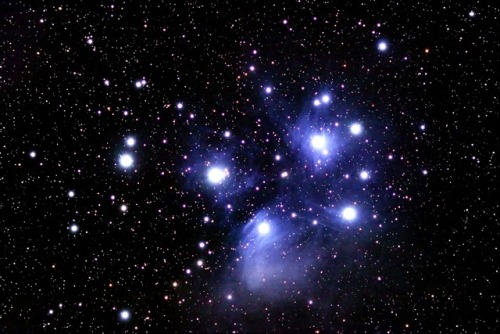The Moon - 5/14/2019 Celestron 127slt MAK IPhone SE (exposure, Contrast, And Color Adjusted) #themoon

The Moon - 5/14/2019 Celestron 127slt MAK iPhone SE (exposure, contrast, and color adjusted) #themoon #telescope #astronomy #georgia #space https://www.instagram.com/p/Bxej2-9H9pS/?utm_source=ig_tumblr_share&igshid=nl1nbu8vcp9f
More Posts from Jbrackettssa and Others

Playing with false color to bring out detail. . . . . #celestron127slt #celestrontelescope #solarsystemambassador #backyardastronomy #moon https://www.instagram.com/p/CSnu-exs0kp/?utm_medium=tumblr

Jupiter and Saturn above Stone Mountain. #jupiter #stonemountain #georgia #space #solarsystemambassador #solarsystem https://www.instagram.com/p/CXCg9nup_No/?utm_medium=tumblr

Pleiades
Looking Up -

When I was a kid, my parents bought me a pretty basic telescope. I’m sure it was only used less than fifty times. It was a pain to lug it outside and set up. The finder scope was always loose and impossible to align. Eventually, the telescope became part of my room decor.
It wasn’t all the telescope’s fault. I was naive and fell for the pretty pictures on the box showing me the universe. I thought I was going to set up in the backyard and find a comet in five minutes. I’d have my Doctorate by the end of the week...
Alas, the only thing I could line up was the Moon. I wasn’t patient enough to look for subtle differences from viewing to viewing. I was young, dumb, and bored. The telescope came out less often. Eventually, it quit getting brought outside at all.
Thirty five years later, a spark in me reignited. I found telescopes with red-dot finder scopes and computerized tracking. I now knew those incredible images on the old box required long exposures and specialized settings. I wanted to try again.
My new telescope has allowed me to see many aspects of the Moon I could never appreciate before. Also, with my camera mount, I can now see and photograph deep space objects. The joy I experienced on seeing my first nebula was overwhelming. I showed my wife my first picture like I was a schoolboy with an A+.
Now for the cool part... I get to share this with my daughter. At five years of age, she can identify the four major planets in the sky. I am jealous of the technology she’ll get to grow up with, but for now, we will use my telescope and maybe even find a comet.

Getting ready for the launch of Boeing’s Starliner to the ISS! #boeing #starliner #boeingstarliner #nasa #solarsystemambassador https://www.instagram.com/p/CR2yJ7TDAIj/?utm_medium=tumblr

It’s gonna be a long night! I’m super excited to be at @kennedyspacecenter for the Artemis 1 Launch! The launch is scheduled for 8:33am local. There will be a two hour window. If it doesn’t launch tomorrow, the next window is September 2, 2022. . . . . . #explorepage #artemis #artemisgeneration #stem #nasasls #SLS #orion #wearegoing #nasaexploration #solarsystemambassadors (at Kennedy Space Center Visitor Complex) https://www.instagram.com/p/Ch09ZFquI_l/?igshid=NGJjMDIxMWI=

1) Check weather conditions for a town in New Mexico. 2) Remotely access a telescope in New Mexico. 3) Select target and parameters (Andromeda Galaxy, 60 second exposure...) 4) Wait until next morning to see results. 5) Open email to see A FREAKIN’ PLANE OR SATELLITE HAS JACKED UP YOUR OTHERWISE GORGEOUS IMAGE!😳🤬🤬 https://www.instagram.com/p/B95s_87HE6e/?igshid=1nodpm0ocwj3i
We Found the Perfect Spot to Land our Moon Rover

After an extensive selection process, we chose the mountainous area west of Nobile Crater at the Moon’s South Pole as the landing site for our first-ever robotic Moon rover. The Volatiles Investigating Polar Exploration Rover, or VIPER, will explore the Moon’s surface and subsurface in search of water and other resources beginning in late 2023. Thanks to past missions, such as satellites orbiting the Moon or impacting its surface, we know there is ice at the Moon’s poles. But how much? And where did it come from? VIPER aims to answer these questions and more by venturing into shadowed craters and visiting other areas of scientific interest over its 100-day mission. The findings will inform future landing sites under the Artemis program and help pave the way toward establishing a long-term human presence on the Moon. Here are five things to know:
The landing site is located just outside the western rim of Nobile Crater at the Moon’s South Pole.

The region has suitable lighting and terrain for our solar-powered rover to navigate.

VIPER will travel up to 15 miles in search of water and other resources.

Its traverse will change depending on what it finds, but it could look like this.

Drivers on Earth will tell the rover where to explore during its 100-day mission.

The VIPER mission is managed by our Ames Research Center in California's Silicon Valley. The approximately 1,000-pound rover will be delivered to the Moon by a commercial vendor as part of our Commercial Lunar Payload Services initiative, delivering science and technology payloads to and near the Moon.
Make sure to follow us on Tumblr for your regular dose of space.

Fun times at the Apollo to Artemis Gala celebrating the 50th Anniversary of Apollo 16! #nasa #nasasolarsystemambassador #solarsystemambassador #artemis #apollo16 #sls (at U.S. Space & Rocket Center) https://www.instagram.com/p/CcneEbjOwD_/?igshid=NGJjMDIxMWI=

“The Dolphin” - Located in the Southern Temperate Belt of Jupiter and imaged by the Juno Spacecraft. Taken on PJ16. Processed by John Brackett credit: NASA / JPL-Caltech / SwRI / MSSS / John Brackett #missionjuno @nasajuno #juno #jupiter @nasa @nasasolarsystem #nasa https://www.instagram.com/p/B9N6dR-nTps/?igshid=1uonlxjmq96ie
-
 mloyasworld liked this · 5 years ago
mloyasworld liked this · 5 years ago -
 jbrackettssa reblogged this · 6 years ago
jbrackettssa reblogged this · 6 years ago

I host public outreach events about the science and research taking place everyday on the International Space Station. A favorite event of mine is called "Story Time From Space", where astronauts onboard the ISS read children's stories featuring space science and STEM topics. (Opinions are my own.)
187 posts